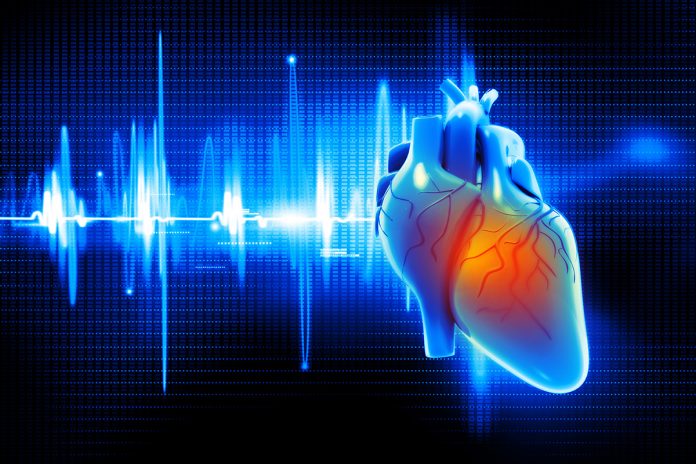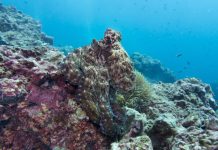Frank F Vincenzi, Professor Emeritus, University of Washington, tells us about the mammalian dive response (MDR), drawing on the case of the woman who developed a fatal heart rhythm while SCUBA diving
We often speak metaphorically of the ‘Elephant in the Room’ as an important feature that is ignored, forgotten, or not understood. The mammalian dive response (MDR) is a generally unrecognized feature of the human body that is automatically activated when we immerse in water. It is the ‘Elephant in the Water’, so to speak. Normally, this response acts to conserve oxygen when we are underwater. But in individuals with certain pre-existing conditions, or who have taken certain drugs, the MDR increases the risk of a fatal heart rhythm, i.e., sudden death. When that happens in water, death is usually classified as a drowning. The case of a middle-aged woman who developed a fatal heart rhythm while SCUBA diving is an example1. First, some background.
The autonomic nervous system (ANS)
The autonomic nervous system (ANS) unconsciously controls various bodily functions such as heart rate and blood pressure. There are two divisions of the ANS. Parasympathetic nerves are most active during ‘rest and relaxation’. Sympathetic nerves are most active during ‘fight or flight’. When one division of the ANS is activated, the other is usually inactive The pacemaker of the heart is inhibited (slow heart rate) by parasympathetic nerves and enhanced (rapid heart rate) by sympathetic nerves.
Electrical activation and recovery of heart cells create the electrocardiogram (ECG). Peaks and valleys in the ECG, and the intervals between them, represent the activation and recovery of certain parts of the heart. The QT interval represents activation and recovery of the main pumping chambers of the heart, the ventricles. There is a normally a quiescent period between the end of one QT interval and the beginning of the next beat.
Many drugs prolong the QT interval2. Mutations in certain genes also increase the QT interval (congenital long QT syndrome, CLQTS). QT prolongation increases the risk of abnormal heart rhythms that lead to sudden death. Most (but not all) people take QT-prolonging drugs without experiencing sudden death. Likewise, many (but not all) individuals with CLQTS have a normal life span; some without knowing they have long QT. By itself, QT prolongation causes a minor risk of sudden death. However, the risk of sudden death is increased if the MDR is activated in the presence of long QT. Individuals with CLQTS or drug-induced QT prolongation are typically not aware of the increased risk of sudden death associated with water-related activities.
The SCUBA diver above was treated for more than a year with high doses of the QT-prolonging drug citalopram. She survived until the dive. Within seconds of entering the water she sensed trouble, headed for a dive boat, and collapsed. An immediate ECG showed ventricular fibrillation. The World Health Organization (WHO) definition of drowning is, “The process of experiencing respiratory impairment due to submersion or immersion in liquid.” Most people assume that drowning is due to inhalation of water. However, death in water is often sudden cardiac death.
The MDR is automatically triggered when we are immersed in water. Even a wet cloth on the face can activate this response. The MDR slows the heart and shunts blood from peripheral organs to the heart, lungs, and brain. By shunting blood to heart, lungs and brain, and simultaneously slowing the heart, the MDR conserves oxygen for vital organs that need a more or less constant supply of oxygen. In short, the MDR is normally a life-protecting safety feature built into the complex system we know as the mammalian body. But the MDR can contribute to fatality under certain circumstances including long QT.
The MDR increases the likelihood of abnormal beats such as premature ventricular contractions (PVCs). Usually, PVCs are of little consequence. But if a PVC happens while the heart is recovering from a prior beat (end of the QT interval), then the risk of triggering a fatal rhythm is increased. QT prolongation increases the chance that a PVC will collide with a previous beat. The more the normal pacemaker is inhibited, the greater the chance that a PVC will occur. And the longer the QT interval, the greater the chance that a PVC will trigger a fatal rhythm.
Citalopram was found in the post-mortem blood of ~3.7% of victims of unintentional drowning in Finland from 2000 to 2009. Another QT-prolonging drug, amitriptyline, was present in ~1.0% of victims3. It was estimated that QT-prolonging drugs possibly or very probably contributed to drowning in 3.5% of the cases. It is unknown how many swimmers or boaters took such drugs but did not drown. Thus, the magnitude of the risk of taking drugs when engaged in water-related activities is uncertain. Further research is needed in this area.
Alcohol can be considered as the major drug causing sudden death when combined with the MDR. Alcohol was present at > 0.05 mg/dL in over 60% of drowning victims in Finland. QT prolongation by alcohol is not yet widely appreciated. It is often assumed that alcohol causes people to drown because they were simply too drunk to swim (psychomotor impairment). However, many observers report that the victim, an excellent swimmer who had a few drinks, did not appear to be intoxicated, but just suddenly stopped moving and went under. That scenario, similar to some recent video-documented drownings, is consistent with sudden death4. How much alcohol-related drowning is due, on the one hand, to psychomotor impairment or to sudden death, on the other hand, remains to be sorted out.
A view emerges that the MDR, normally a life-protecting reflex, greatly increases the risk of sudden death when combined with congenital or drug-induced QT prolongation. Perrow noted that safety features built into complex technological systems sometimes contribute to catastrophic failure5. The human body is a complex biological system. Under conditions that are usually not dangerous, one of our safety features, the MDR, occasionally contributes to catastrophic failure6. A young man taking the QT-prolonging antibiotic, azithromycin, would probably not hesitate to go swimming with his friends on a nice sunny day – although, thanks to the elephant in the water, it might be his last.
References
1 Vincenzi, F.F. & Lunetta, P., 2015. Citalopram-Induced Long QT Syndrome and the Mammalian Dive Reflex. Drug Safety – Case Reports, 2, p.12.
2 Woosley RL, Heise CW, Gallo T, Tate J, Woosley D and Romero KA, CredibleMeds.org, QTdrugs List, [Accessed Nov 10, 2020], AZCERT, Inc. 1822 Innovation Park Dr., Oro Valley, AZ. 85755.
3 Pajunen, T. et al., 2017. Unintentional drowning: Role of medicinal drugs and alcohol. BMC public health, 17(1), p.388.
4 Carballo-Fazanes, A., Bierens, J.J.L.M. & The International Expert Group To Study Drowning Behaviour, 2020. The Visible Behaviour of Drowning Persons: A Pilot Observational Study Using Analytic Software and a Nominal Group Technique. International journal of environmental research and public health, 17(18), p.6930.
5 Perrow, C., 1999. Normal Accidents: Living with High Risk Technologies Reprint, Princeton, New Jersey: Princeton University Press.
6 Vincenzi, F.F., 2019. Sudden Unexpected Death and the Mammalian Dive Response: Catastrophic Failure of a Complex Tightly Coupled System. Frontiers in physiology, 10, p.97.
*Please note: This is a commercial profile





![Discovering the dark universe and a stellar nursery: Euclid searches through Orion constellation Image description: The focus of the image is a portion of LDN 1641, an interstellar nebula in the constellation of Orion. In this view, a deep-black background is sprinkled with a multitude of dots (stars) of different sizes and shades of bright white. Across the sea of stars, a web of fuzzy tendrils and ribbons in varying shades of orange and brown rises from the bottom of the image towards the top-right like thin coils of smoke.] CREDIT ESA/Euclid/Euclid Consortium/NASA, image processing by M. Schirmer (MPIA, Heidelberg)](https://www.openaccessgovernment.org/wp-content/uploads/2025/11/Euclid_peers_through_a_dark_cloud_s_dusty_veil-218x150.jpg)





